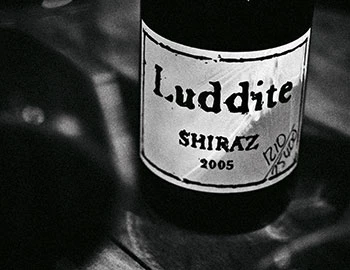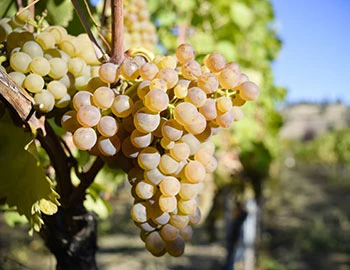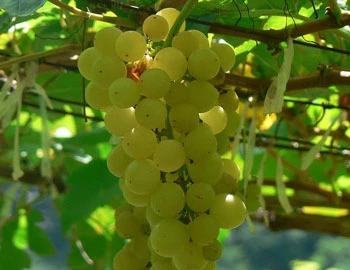
Saboteur White 2023
WO Luddite, Luddite Wines, 750 ml

| Grape variety: | Chenin Blanc, Fumé Blanc, Viognier |
| Producer: | Luddite Wines / Fam. Verburg & Meyer |
| Origin: | South Africa / Coastal Region / Bot River |
| Other vintages: |
Description
A glass of summer: ripe, juicy white peaches and pears, a basket full of fruit. It doesn’t disappoint the palate with a fruit richness balanced by a slightly mineral note reminiscent of flint and a fresh, bitter grapefruit note in the finish.
Attributes
| Origin: | South Africa / Coastal Region / Bot River |
| Grape variety: | Chenin Blanc, Fumé Blanc, Viognier |
| Ripening potential: | 4 to 10 years |
| Drinking temperature: | 16 to 18 °C |
| Food Pairing: | Vegetable dip, Salad with vegetables, pulses, pasta, Vegetable flan, quiche, Baked egli fillets with tartare sauce |
| Vinification: | fermentation at low temperatures, fermentation in steel tank, Pumping over, cooling period |
| Harvest: | hand-picking |
| Maturation: | in partly new and used barriques/ Pièces |
| Bottling: | filtration |
| Maturation duration: | 12 months |
| Volume: | 12.5 % |
| Note: | Contains sulphites |
Luddite Wines / Fam. Verburg & Meyer
Niels Verburg is one of those people who you immediately want to befriend. With his imposing stature and beaming smile, he stands out and magically draws people in.
At an early age, while he was working in Australia, he realised that Shiraz was "his" grape. In Chile, he later found the inspiration for the way he wanted to make his wine.
Together with his wife Penny, he planted his first vines in 1996. The first vintage was pressed in 2000. The small winery with just 6 hectares of vines is located just outside the village of Bot River. Walker Bay is only 30 kilometres away. The mild Mediterranean climate from the nearby ocean gives the vines on the south-western slopes of the Houw Hoek mountains a slow and long growing period. This results in spicy Shiraz with elegant fruit sweetness.
The name of the vineyard refers to the Luddites, 19th century English textile workers who fought against the Industrial Revolution. Consequently, Niels is rather reluctant to use "technology", as he says in a humorous way, both when caring for the vineyards and working in the cellar. Vinification involves as little intervention as possible, if any.
Niels and Penny have fulfilled their dream. In addition to the vines, there are also some olive trees and a few lucky pigs are reared: a rural idyll in South Africa. They epitomize the great change occurring in South Africa since the 1990s: moving away from mass production and towards independent quality wines that do not fear comparison with top international wines.

Viognier
Saved from extinction
It’s hard to believe that the Viognier nearly became extinct 50 years ago. Today, it grows worldwide on over 10,000 hectares. The variety was first mentioned in 1781, and probably originated in Condrieu, in the northern Rhône Valley. There, and in the 3.8-hectare mini-appellation of Château-Grillet, vintners kept it on the post when the rest of the world wanted to know nothing about it. Its inventory shrank to a meagre 14 hectares. This is because it provides only low yields, and for a while there were no good seedlings. In the 1980s, interest in Viognier reawakened. It actually shows a unique profile: deep golden with good body and aromas of apricot, lime blossom, citrus fruits, honey and hazelnut. It is popular in the Languedoc region, flows into the white Côtes du Rhône and also does very well in California. The best examples fit wonderfully with poultry in cream sauce, noble fish like turbot or – why not? – lobster.

Chenin Blanc
Small area, great variety
The Chenin blanc now grows on just one percent of French vineyards. But its wines are immensely diverse. The homeland of this grape is the Loire Valley. There it muscles into the light-footed frothers of Saumur and Vouvray. The vintners of Bonnezeaux and Quarts-de-Chaume process them into beguilingly sweet wines. And in Savennières it yields dry whites with mineral cores and great aging potential. They smell of apple, honey and fresh straw, and show great body and a stimulating acidity. The world's largest area of Chenin blanc is in South Africa, where it landed in the mid-17th century with Dutch traders. The most exciting wines result from old vines drawn from traditional bush forms.


